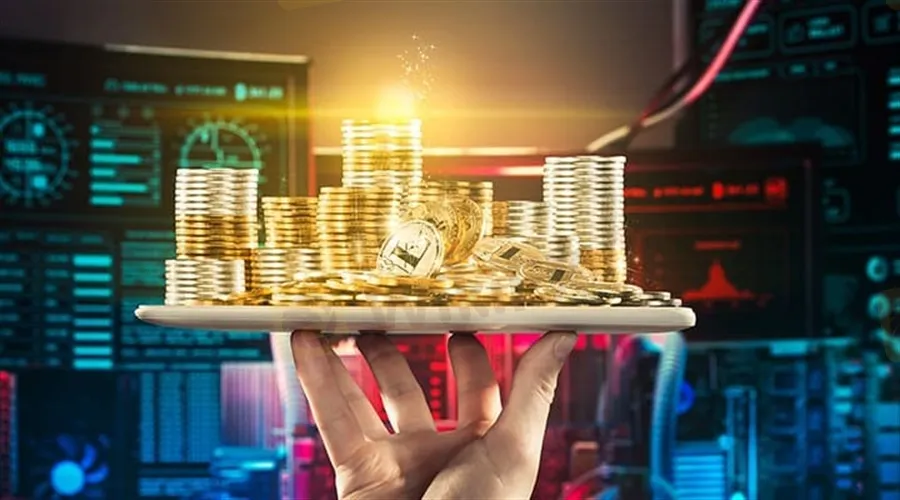简体中文
繁體中文
English
Pусский
日本語
ภาษาไทย
Tiếng Việt
Bahasa Indonesia
Español
हिन्दी
Filippiiniläinen
Français
Deutsch
Português
Türkçe
한국어
العربية
Are Cryptocurrency Exchanges Overvalued?
Abstract:Cryptocurrency prices move both up and down, but one set of companies always profits: crypto exchanges. These trading platforms have also attracted the attention of big pocket investors and venture capitals and are receiving astronomical sums from them at insane valuations.

FTX recently snatched the valuation of $32 billion.
These global exchanges are growing at a tremendous pace.
FTX.com, which became one of the leading crypto trading venues in terms of volume, recently hit the valuation of $32 billion, jumping from $25 billion in just three months. The US subsidiary of this global exchange touched the $8 billion valuation mark separate last month.
While FTX and its investors were vocal about the exchanges valuation, Binance, which leads the pack of global crypto exchanges, never disclosed its value. A former Binance executive, however, said that the exchange could be worth $300 billion.
So what is driving this astronomical valuation of cryptocurrency exchanges? And is it even fair to put such a high valuation on these young exchanges?
“When it comes to the valuation, we should in the first place think in terms of the fundamentals which are pertinent to any commercial vehicle, such as its ability to generate cash flow, its long-term prospects, and the return at which the company can produce value for its investors,” Sergey Zhdanov, COO of crypto exchange EXMO, explained to Finance Magnates.
However, these metrics alone cannot be predicted with some level of certainty are not sufficient to evaluate the fair valuation of crypto exchanges as so many other factors also need to be considered.

Disclaimer:
The views in this article only represent the author's personal views, and do not constitute investment advice on this platform. This platform does not guarantee the accuracy, completeness and timeliness of the information in the article, and will not be liable for any loss caused by the use of or reliance on the information in the article.
Read more

How Big is the Impact of the USD-JPY Rate Gap on the Yen?
The U.S. Federal Reserve's repeated rate cuts and the narrowing of the U.S.-Japan interest rate differential are now in sight. So, why is the U.S.-Japan interest rate differential so important for the yen’s safe-haven appeal, especially when global economic uncertainty rises?

Has the Yen Lost Its Safe-Haven Status?
The Japanese yen failed to create a miracle in 2024, continuing its four-year decline against the US dollar. Does the yen still retain its safe-haven properties? Will the interest rate differential between the US and Japan narrow?

New Year, New Surge: Will Oil Prices Keep Rising?
As of the writing of this article (January 2), oil prices stand at $71.88 per barrel. Investors need to continue monitoring whether the supply and demand dynamics will continue to push prices further up.

Will the Fed Cut Rates in 2025? What to Expect
The Federal Reserve has implemented multiple interest rate cuts in 2024, bringing the rate to a range of 4.25%-4.5% by the end of the year. However, whether the Fed will continue cutting rates or shift to rate hikes in 2025 remains uncertain. The Fed's policy direction depends not only on economic data but also on internal adjustments, the policy direction of the new president, and other factors.
WikiFX Broker
Latest News
PH SEC Issues Crypto Guidelines for Crypto-Asset Service Providers
FTX Chapter 11 Restructuring Plan Activated: $16 Billion to Be Distributed
Think Before You Click: Malaysian Loses RM240,000 to Investment Scam
Share Industry Insights and Discuss Forex Market Trends
Top 9 Financial Fraud Cases in Recent History
KuCoin Pay Introduces Easy Crypto Payments for Merchants
Malaysian Man Killed in Alleged Forex Dispute-Related Attack
How Big is the Impact of the USD-JPY Rate Gap on the Yen?
What Euro Investors Can't Afford to Miss
Is OneRoyal the Right Broker for You?
Currency Calculator






